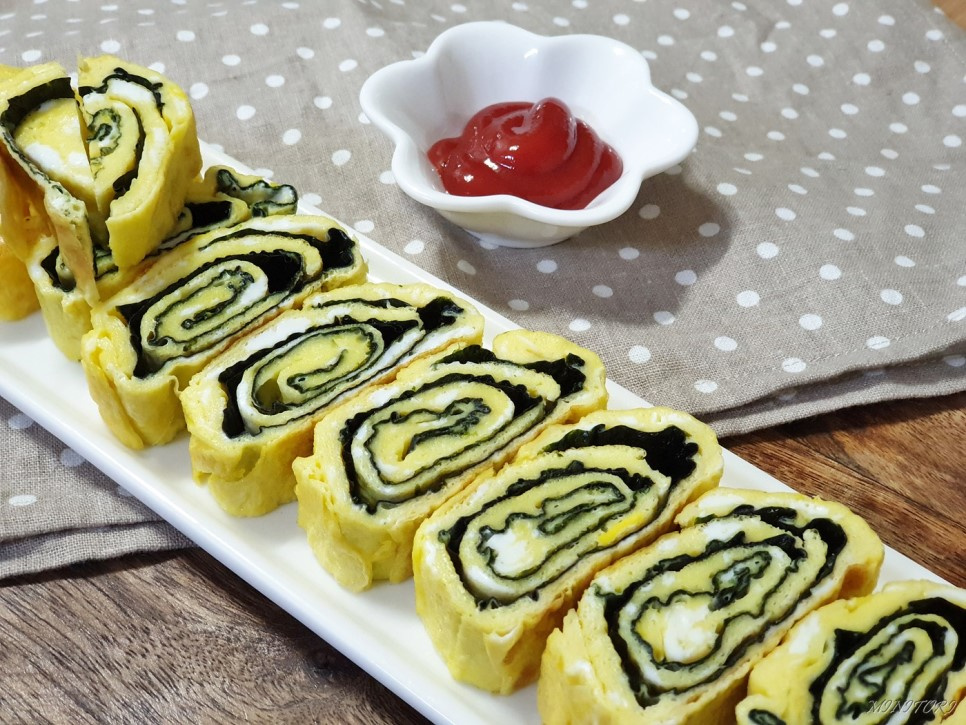Seaweed Rolled Omelet (Kim Gyeran Mari)
Nostalgic Side Dish: How to Make Beautiful Seaweed Rolled Omelet (Mom’s Recipe)

I suddenly craved the nostalgic ‘Kim Gyeran Mari’ that my mom used to make, so I decided to prepare it for dinner tonight. This dish is simple to make with just eggs and seaweed, and its beautiful appearance makes it even more delightful! Let’s learn how to make this pretty rolled omelet easily.
Ingredients- 5 eggs (small size; approx. 4 large eggs)
- 2 sheets of roasted seaweed for kimbap
- Pinch of salt (for seasoning eggs)
- Canola oil (or cooking oil)
Cooking Instructions
Step 1
I’m using 5 eggs to make the rolled omelet a bit thicker. (If you’re using large eggs, 4 should suffice to achieve a similar volume.) Crack all the eggs into a wide bowl, season with a pinch of salt, and gently whisk them. Make sure to break down the chalazae (the white, stringy bits) with chopsticks for a smoother texture.

Step 2
Lightly grease the pan you’ll be using for the omelet, then use a paper towel to wipe out most of the oil. You want just a very thin film of oil remaining on the surface. Too much oil can prevent the omelet from setting nicely or result in an uneven color. Keep the heat on low. Cooking on low heat allows the egg mixture to cook through evenly without burning.

Step 3
Carefully lay one sheet of roasted kimbap seaweed over the thinly spread cooked egg. Once the edges of the egg start to set, begin to roll it up from one end, keeping it firm and compact.

Step 4
After rolling up the first section, pull it towards the front of the pan. Pour more of the remaining egg mixture into the empty space in the pan. Then, place another sheet of seaweed on top of the newly poured egg, and gently lift the rolled portion to cover it. Repeat this process to create a multi-layered, thick omelet.

Step 5
It’s best to roll when the egg is not fully cooked, as this helps the seaweed adhere well and create a neat shape. If any part of the seaweed is visible due to uneven egg distribution, gently press the rolled omelet against the side of the pan to form sharp, square corners. This technique helps achieve a clean, rectangular shape.

Step 6
Once cooked, transfer the seaweed rolled omelet to a cutting board and let it cool slightly. Cutting it while it’s too hot can cause it to fall apart. Once it’s warm to the touch, slice it into bite-sized pieces, about 1.5 to 2 cm thick, for a visually appealing and easy-to-eat serving. Enjoy!




